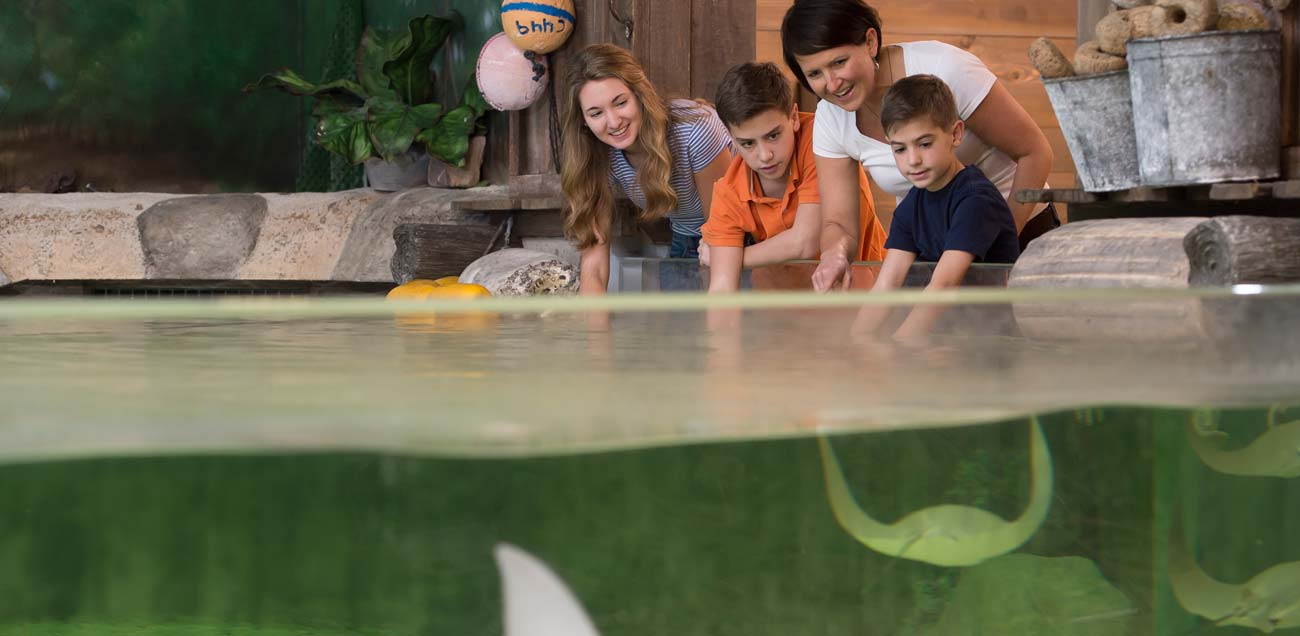Its square and indented snout looks like a cow nose! The cownose stingray is known for their mass migrations, but you can visit them at the Fort Wayne Children’s at the Stingray Bay! Flying like birds under the water, these cownose rays move with the waves! Here are some fun facts to help you get to know these gentle fish!
1. Long-Distance Swimmers.
Cownose Stingrays are strong swimmers and can migrate long distances. Cownoses are native to the western Atlantic Ocean, their primary nursery habitat, but will leave around October to their wintering grounds in the southern Caribbean. As many as 10,000 rays will migrate these waters every year!
2. Breakfast in Seabed.
Cownose rays feed on the seabed by detecting their prey through sensing movements and weak electric signals. They mostly eat bottom-dwelling fish, crabs, lobsters, and marine mollusks. They find their buried prey by flapping their fins to extract them from the sand, then using their powerful, plate-like teeth separate the edible parts from the inedible parts.
3. Not Like Any Other Ray.
With a square, indented snout resembling a cow’s nose, a specialized fin beneath the head divided into two, short and rounded lobs, this gentle ray is not like any other! The cownose ray has a kite-shaped body and a wingspan up of to four feet and can weigh as much as 50 pounds! Their whiplike tails are twice as long as their bodies. People sometimes mistake these rays for sharks! When they swim near the surface, the tips of their wings can stick out of the water and look like a shark’s dorsal fin!
4.Conservation Status.
The only representative of its family, this ray species is IUCN listed as Near Threatened (NT). Despite little being known about this fish they are one of the primary finds in fisheries along Pacific waters during their migration. Though they are not targeted, they are often captured accidentally.
5.Venomous but not Dangerous.
Like other rays, cownoses have venomous barbed spines at the base of their tails. These rays, however, are not considered dangerous to humans. The venom is not fatal, and the fish usually swim near the surface, reducing the chances of being stepped on! The cownose stingrays in Stingray Bay have their spines clipped by our vet staff, like how you clip your fingernails.
Written by Ellie, Communication Intern

